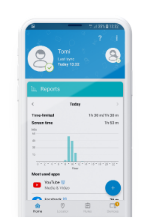What is malware?
Let’s start with the word malware. It is a blend of the words “malicious” and “software” and it is used as a blanket term for harmful computer programs, usually installed without the victim’s knowledge. While the term covers tools with various functions and different levels of sophistication, what they all have in common are crooked intentions of their authors or operators.
Broadly speaking, malware can be divided into three categories based on the level of harm it can cause victims:
· Potentially unwanted applications (PUAs)
PUAs are what one would call a “grey zone”. This type of software might not be outright damaging, but is often intrusive or deceptive. PUAs may include various browser toolbars, software that displays unwanted advertisements, software mining cryptocurrencies without the user’s knowledge, and others.
· Commodity malware
A large category of malicious code with clear intention of harming the victim, such as by stealing their data, passwords, stealing money from their bank accounts, spying on them, or extorting money from them. The aim behind the majority of such “classic” malware is money. Malware can be broken down to further categories based on its functionality – ransomware, spyware, downloaders, keyloggers, backdoors, adware and many more.
· Advanced persistent threats (APTs)
The most technically advanced type of ill-intentioned code created by experienced (and well-paid) teams of malware developers. APTs usually target critical infrastructure, energy distribution, governmental institutions, or traffic systems and can cause serious damage to the functioning of a city or entire country. That is also the reason they are sometimes called cyberweapons. A regular computer user is not likely to encounter such a threat but can be affected by the consequences of an APT attack.
Where can children and teens encounter malware?
In short – pretty much anywhere online. Social networks, chatrooms, email inboxes, video streaming and gaming websites – malware can lurk behind any innocuous-looking link or attachment, or can even run in-browser, when you or your child visit a compromised website. Smartphones and tablets are no malware-free zones either – fraudulent and malicious apps are known to hide behind seemingly useful and fun apps, sometimes even in the official Android app store.
Although there are countless technically advanced ways of infecting a system and ensuring further spreading of malware, one of the most effective ways is to go after the weakest link in the chain – the human being. And when that human being is a curious child, the attacker’s “job” just gets easier.
Using social engineering – the psychological manipulation of individuals – attackers can trick the child into clinking malicious links or opening malicious attachments, giving away sensitive data or granting them various intrusive permissions.
Without being aware of these dangers, children may also inadvertently end up exposing their families to various cyberthreats and problems – such as banking malware obtaining credit card details and other highly sensitive information.
How can you protect your child and yourself against malware?
· Install a reliable security solution on all computers used in your family to keep them safe from malicious intruders. Mobile devices running Android can be protected by a reputable mobile security software. ESET solutions will automatically run a scan on each downloaded file and block any malicious items, keeping your devices safe.
· Keep the operating system, applications and other software as well as browsers on your family’s devices up-to-date. This can be critical in preventing attacks that rely on unpatched vulnerabilities.
· Teach your children to stop and think before clicking on links and download buttons, as many of these can be deceptive, leading to scams or malicious websites.
· When your children want to download new software, point them to the website of the software’s original developer or to official online stores. Sticking to official sources lowers the chance of accidentally downloading any dangerous or unwanted extras along with the desired program.
· Using a reputable parental control app, after an agreement with your child, can help you create a secure framework for the child’s online activities and enable you to block problematic content.


